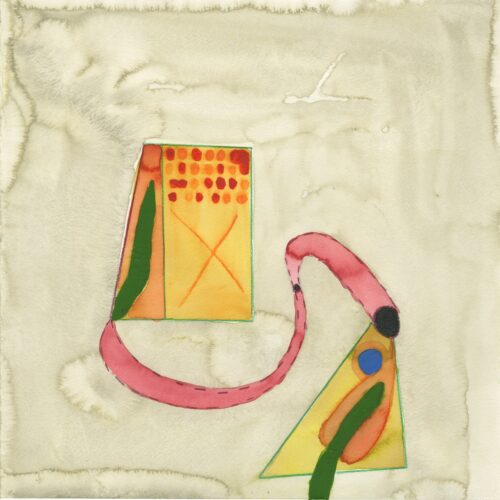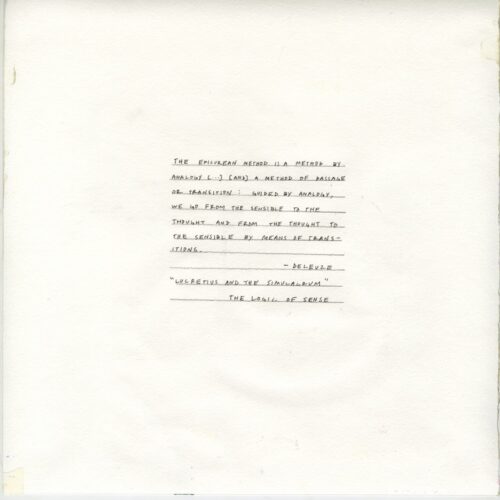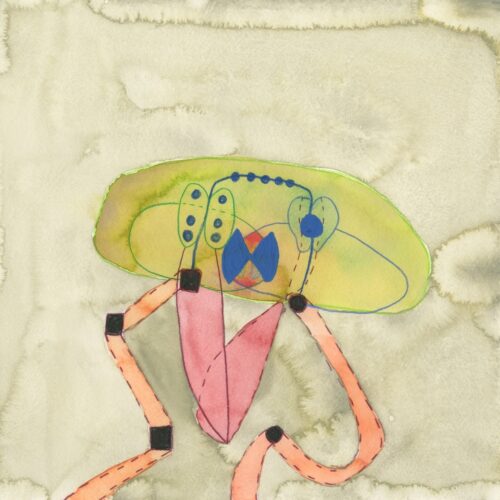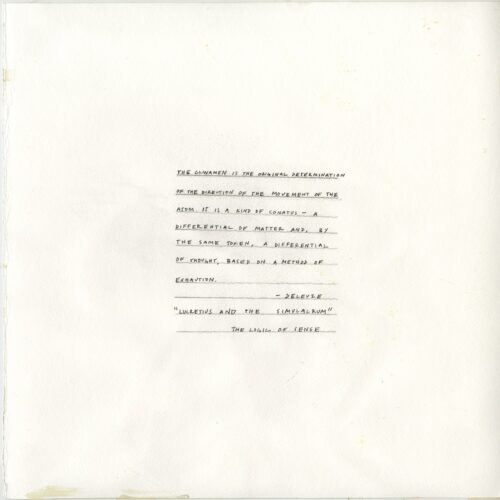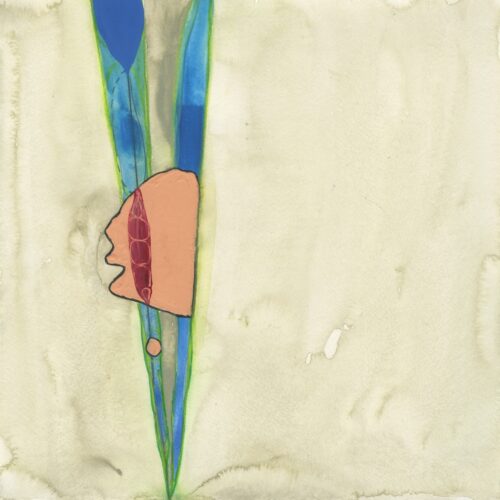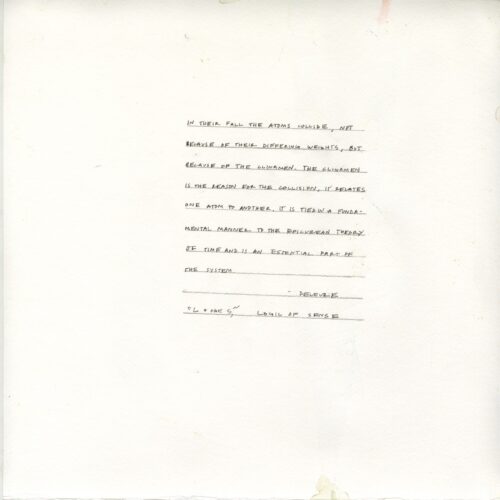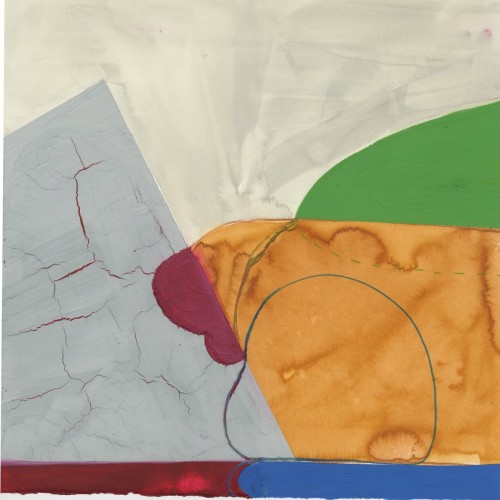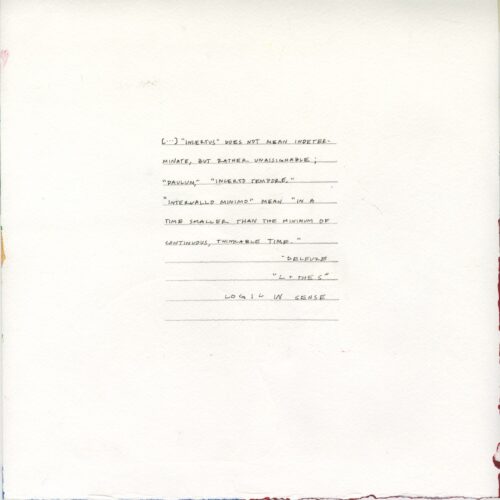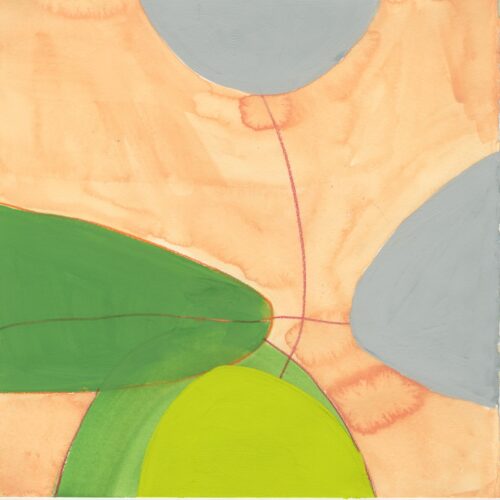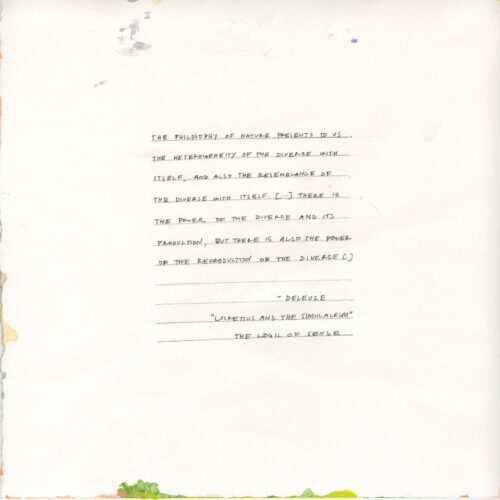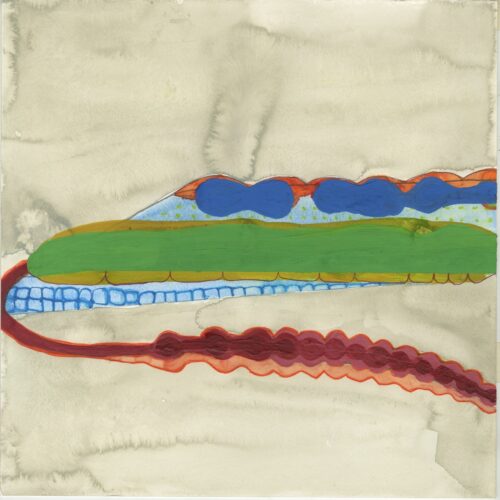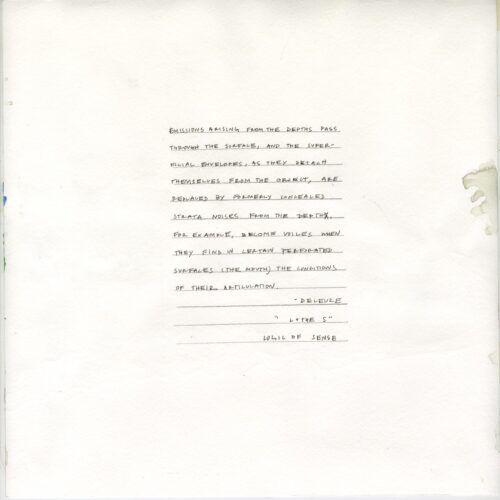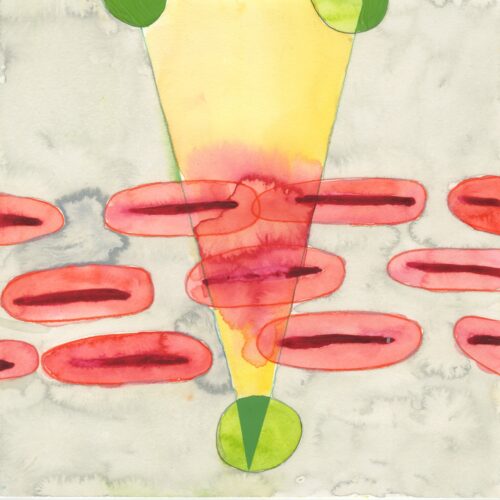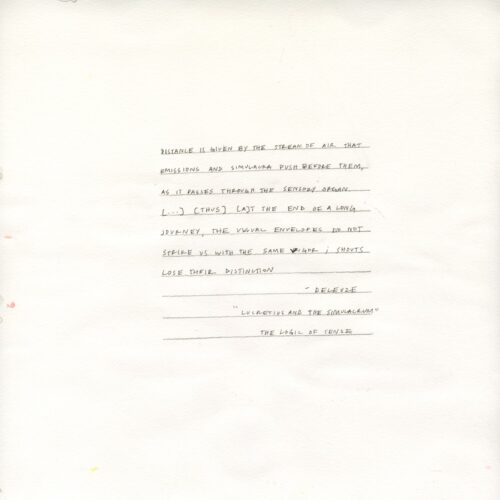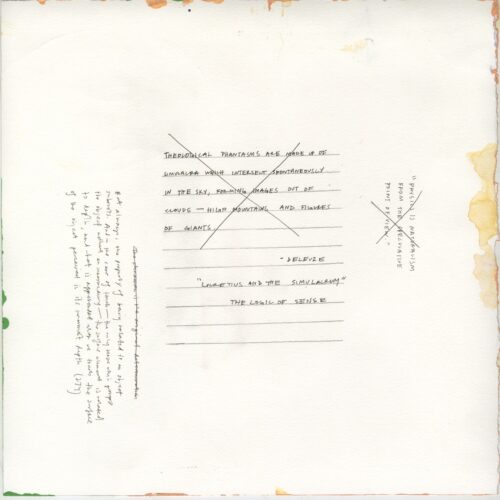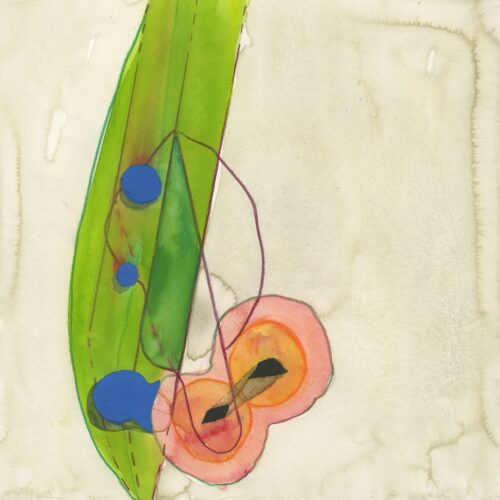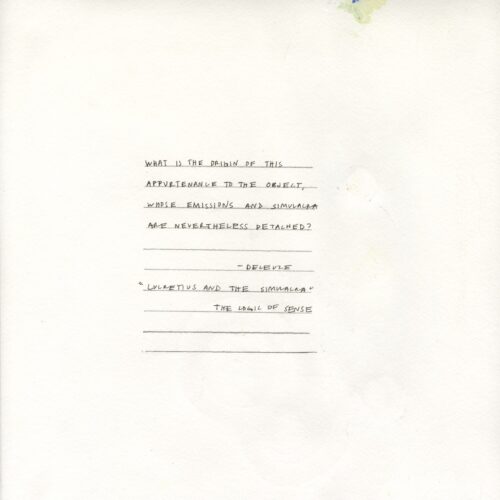- No products in the cart.
TEXT:
Deleuze, Gilles. “Lucretius and the Simulacrum.” The Logic of Sense. Translated by Mark Lester. New York: Columbia University Press, 1990.
FULL EXCERPT:
The Epicurean method is a method by analogy […] [and] a method of passage or transition: guided by analogy, we go from the sensible to the thought and from the thought to the sensible by means of transitions. (268) / The clinamen is the original determination of the direction of the movement of the atom. It is a kind of conatus – a differential of matter and, by the same token, a differential of thought, based on a method of exhaustion. (269) / In their fall the atoms collide, not because of their differing weights, but because of the clinamen. The clinamen is the reason for the collision, it relates one atom to another. It is tied in a fundamental manner to the Epicurean theory of time and is an essential part of the system. (269) / […]“incertus” does not mean indeterminate, but rather unassignable; “paulum,” “incerto tempore,” “intervallo minimo” mean “in a time smaller than the minimum of continuous, thinkable time.” (270) / The philosophy of Nature presents to us the heterogeneity of the diverse with itself, and also the resemblance of the diverse with itself. […] There is the power of the diverse and its production, but there is also the power of the reproduction of the diverse[.] (271) / Emissions arising from the depths pass through the surface, and the superficial envelopes, as they detach themselves from the object, are replaced by formerly concealed strata. Noises from the depth, for example, become voices when they find in certain perforated surfaces (the mouth) the conditions of their articulation. (273-4) / Distance is given by the stream of air that emissions and simulacra push before them, as it passes through the sensory organ. This is why the object is perceived as it must be perceived, relative to the state of simulacra and emissions, […] the obstacles they encounter, the distortions to which they submit, or the explosions of which they are the center. At the end of a long journey, the visual envelopes do not strike us with the same vigor; shouts lose their distinction. (274) / But always, the property of being related to an object subsists. And, in the case of touch—the only sense which grasps the object without an intermediary—the surface element is related to depth, and what is apprehended when we touch the surface of the object is perceived as residing in its innermost depth. (274) / What is the origin of this appurtenance to the object, whose emissions and simulacra are nevertheless detached? (274-5)
IMAGES:
12 x 12 inches; gouache, watercolor, colored pencil, and graphite on paper

